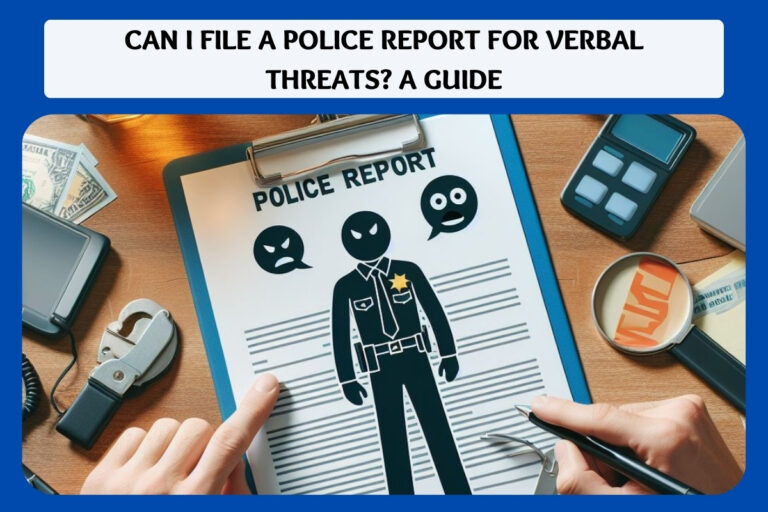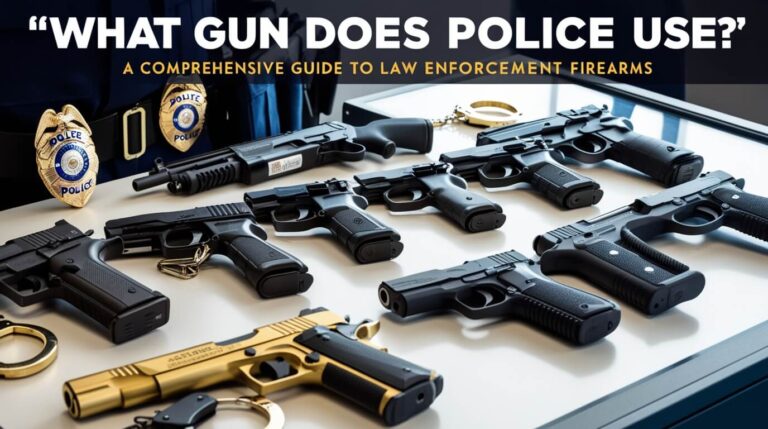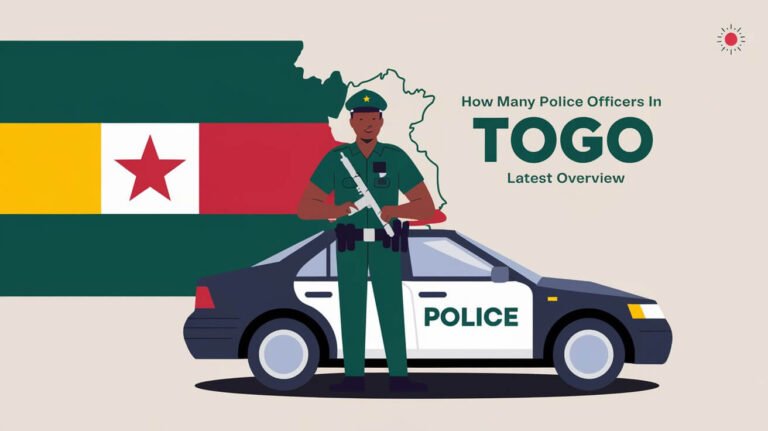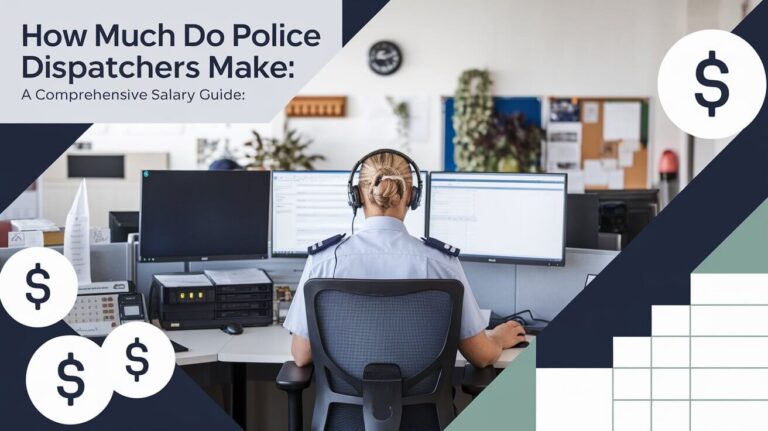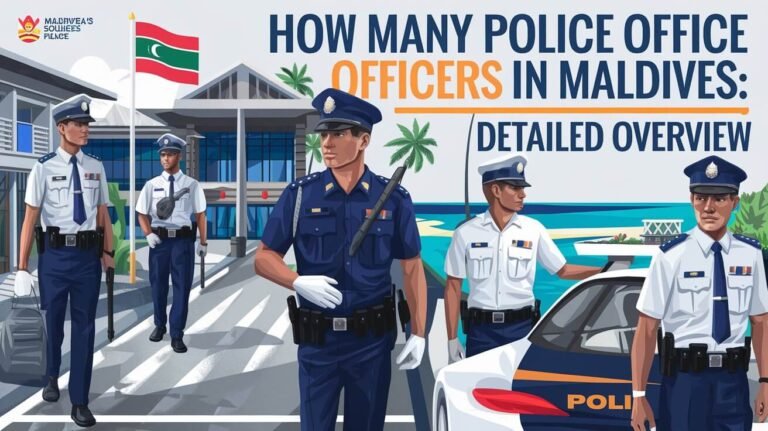How Many Officers Baltimore Police Department Have: Updated Stats
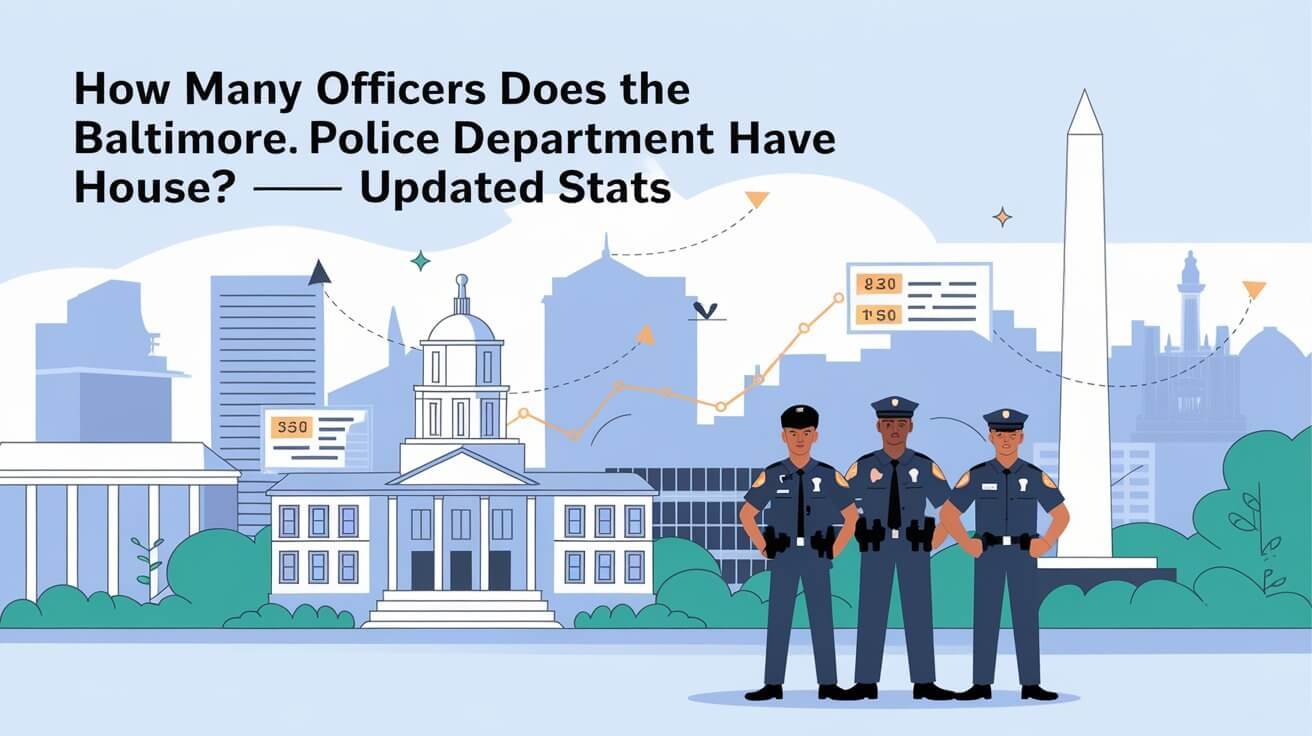
The size of the Baltimore Police Department is key to understanding its role in the community. It has 2,646 officers, making it one of the biggest police forces in the U.S. This number shows how well the department can serve and protect Baltimore’s over 600,000 people.
As of 2020, the department has about 2,935 employees. This includes both sworn officers and civilians. It shows the department’s dedication to keeping the community safe. Knowing how many officers the department has helps us see if it meets the city’s needs.
Current Officer Count in Baltimore Police Department
The Baltimore Police Department is struggling with a big problem. They are short 489 officers. This makes it hard for them to keep the community safe.
The number of officers is very important. It shows how well the department can do its job. Without enough officers, the department can’t do its best.
The shortage is affecting different parts of the department in different ways. Some areas are hit harder than others. For example, there should be 48 staff members looking into police misconduct, but there are only 36.
This shows that the department needs more officers. More officers would help all parts of the department work better.
Here are some important facts about the officer shortage in Baltimore:
- The department is short 489 officers, indicating a substantial staffing shortage.
- In the last quarter, the department lost 51 officers but hired only 23.
- Baltimore officers are frequently working two to three overtime shifts a week due to the shortage of officers.
Shortage is also affecting the department’s budget and people. The department needs almost 500 more officers to meet its budget. This is putting a lot of pressure on the department.
Baltimore Police Force Size Through the Years
The Baltimore Police Department has a rich history, starting in 1784. It has changed a lot over the years, growing to meet community needs. This growth shows how the department has adapted to new events and technology.
At first, the department was made up of unpaid night watchmen in 1784. Later, it became a paid force with clear rules. By 1796, it had five captains and 45 privates. This was the start of its growth, with big changes like adding more men and new ranks in 1857.
Some important events helped the department grow:
- 1857: The first detective squad was formed, with five detectives in civilian clothes.
- 1826: The Mayor took control, appointing leaders for different areas.
- 1835: A new rule allowed for twelve lieutenants of the watch, making them police officers.
Now, the Baltimore Police Department is one of the biggest in the U.S. Knowing its history helps us understand its size and structure today. As it keeps changing, remembering its past is key to its future.
Police Officer Distribution Across Districts
The Baltimore Police Department covers several districts. Officers are placed where they’re needed most. This strategy is key to the department’s success.
Patrol units are the heart of community policing. They keep a visible presence and handle daily calls. Specialized units focus on specific crimes or community needs.
The department’s plan ensures each district gets the right mix of units. This way, the department can serve the community well. It also tackles specific crime and safety issues.
Effective Distribution of Resources
The department uses data to decide where to place officers. It looks at crime trends and community feedback. This helps the department use resources wisely.
Doing this, the department can better meet community needs. It can also reduce crime and improve safety.
Community Engagement and Feedback
The Baltimore Police Department talks to the community for feedback. This helps the department improve its strategy. It makes sure the department meets community needs and concerns.
Working with the community, the department builds trust. It also becomes more effective in fighting crime and keeping people safe.
Demographic Composition of Baltimore Officers
The Baltimore Police Department is working hard to be more diverse. They want to make sure their officers reflect the community they serve. This effort is key to their success in connecting with the community.
A diverse police force can better meet the needs of a diverse community. The department has made strides in this area. Now, 45% of officers are white, 40% are African American, and 12% are Hispanic. This diversity helps build trust and strong relationships with the community.
Some important stats show the department’s diversity:
- 45% of officers are white
- 40% of officers are African American
- 12% of officers are Hispanic
- 80% of sworn police officers in Baltimore County are white, while whites make up just 57% of the county’s overall population
The department is committed to increasing diversity and inclusion. These efforts have made the police force more diverse and representative. This is vital for effective community policing and building trust with the public.
| Category | Percentage |
|---|---|
| White officers | 45% |
| African American officers | 40% |
| Hispanic officers | 12% |
Recruitment Status and Vacant Positions
The Baltimore Police Department works hard to keep its team strong. It focuses on filling vacant positions to serve the community well. Right now, they have about 50 spots open each quarter. They’re using different ways to find the right people for these roles.
The training academy is key in getting new officers ready. It has a 70% success rate, showing it’s doing a great job. The academy teaches new officers everything they need to know. They go through many tests, like a written exam and a physical test, to make sure they’re ready.
Current Recruitment Initiatives
The department uses many ways to find new recruits. They have outreach programs, good pay, and online job ads. Online job boards get 45% of the applications. Employee referrals bring in 25% of the candidates. They also use social media and events to find people.
Training Academy Numbers
The training academy is a big part of hiring new officers. It aims to hire a diverse group of people, with a 30% success rate. The academy makes sure new officers can handle the job physically and mentally.
| Category | Number of Vacant Positions | Recruitment Success Rate |
|---|---|---|
| Law Enforcement | 30 | 65% |
| Administration | 20 | 75% |
Keeping the department full is important for its work. The academy and recruitment efforts help bring in new officers. This ensures the community gets the best service from the police.
Budget Allocation for Officer Positions
The Baltimore Police Department’s budget for officer positions is a big part of its total budget. With a proposed FY 2024 budget of $289.2 million, the department is putting a lot into its people. It plans to have 2,255 full-time and 368 part-time officers, along with 40 full-time and 18 part-time special personnel.
Personnel costs are set to be $236.8 million, which is 91% of the General Fund budget for FY 2024. This is key to figuring out the department’s size and what it can do. The budget also includes $3.4 million for new spending or big increases, like raising Traffic Guard wages and funding for new projects.
Some important details about the budget for officer positions are:
- Personnel expenses make up 91% of the General Fund budget for FY 2024.
- The budget includes funding for 2,255 full-time general personnel and 368 part-time general personnel.
- $3.4 million is allocated for new expenditures or significant increases, such as raising Traffic Guard wages.
Budget for officer positions is very important for the department’s work in the community. By focusing on personnel, the Baltimore Police Department aims to have the right people to keep the community safe.
Comparison with Other Major City Police Departments
The Baltimore Police Department is compared to other major city police departments. We look at size, structure, and how they work. For example, the New York City Police Department (NYPD) has 33,475 officers. The Baltimore Police Department (BPD) has 2,008 officers.
Other big police departments, like the Chicago Police Department (CPD) and the Los Angeles Police Department (LAPD), have 11,580 and 8,784 officers. The Philadelphia Police Department (PPD) and the Houston Police Department (HPD) have 5,544 and 5,195 officers. These numbers show how different police departments are in size.
Regional Comparisons
In the region, the Metropolitan Police Department of the District of Columbia (MPDC) has 3,975 officers. The Las Vegas Metropolitan Police Department (LVMPD) has 3,398 officers. The Miami-Dade Police Department (MDPD) and the Dallas Police Department (DPD) have 3,139 and 3,121 officers, respectively.
These comparisons give us insights into police departments in similar cities. By comparing, we can see what works well and what needs improvement in each department.
Officer Retention Statistics
The Baltimore Police Department keeps track of how many officers stay and leave. This helps them understand why officers choose to leave. Keeping officers is key for the department’s success and building trust with the community.
To keep more officers, the department has started new programs. They offer a $5,000 signing bonus for new hires. They also give $1,000 a month for housing and $5,000 a year to help with student loans. Plus, they’ve increased the referral bonus to $5,000 and added pay incentives to keep officers from leaving.
Some important facts about officer retention in Baltimore include:
- 70 sworn officers have left, while 26 were hired by March of this year.
- The department solves 48.9% of homicides and 22.4% of non-fatal shootings.
- Almost 20% of officers hired after 2018 have quit, with 15% of 2019 hires leaving too.
These numbers show the department’s struggle to keep officers. But with new programs and incentives, they hope to keep more officers and lower turnover.
| Year | Number of Officers Hired | Number of Officers Left |
|---|---|---|
| 2018 | 100 | 20 |
| 2019 | 80 | 15 |
| 2020 | 60 | 10 |
Impact of Staffing Levels on Police Services
The Baltimore Police Department’s staffing levels greatly affect its ability to serve the community. With 2,274 sworn officers and 519 civilian employees, the department’s size is key. It ensures quick responses to emergencies, effective crime prevention, and strong community ties.
Having enough officers is vital for quick responses in emergencies. The number of officers affects how fast they can get to calls. Changes in staffing levels mean changes in response times, impacting public safety.
Staffing levels also link to crime rates. The department solves 48.9% of homicides and 22.4% of nonfatal shootings. This shows how important staffing is for crime solving. Here’s a table showing the department’s needs and current staffing:
| Division | Staffing Needs | Actual Staffing |
|---|---|---|
| Patrol | 1,500 | 1,200 |
| Criminal Investigations | 300 | 250 |
| Technology Division | 100 | 80 |
Looking at the department’s staffing and its effects, it’s clear. Adequate staffing is critical for public safety and effective law enforcement.
Future Projections for Department Size
The size of the Baltimore Police Department will change due to population growth, crime trends, and budget. To predict the future, we must look at these factors. The department is short 550 officers, showing the need for a plan to fill this gap.
Several factors will shape the department’s future size. These include:
- Population growth: As the city grows, more police will be needed.
- Crime trends: Changes in crime will affect the number of officers required.
- Budget allocations: Enough money is needed to hire and keep officers.
To fix the officer shortage, the police commissioner has a plan. More officers will be in patrol next year. Civilians will also help, allowing more officers for patrol duties. These steps are key to the department’s future size and ability to serve the community.
| Category | Current Number | Projected Number |
|---|---|---|
| Patrol Officers | 1,981 | 2,100 |
| Sworn Officers | 1,950 | 2,200 |
| Civilian Staff | 500 | 550 |
Looking at these factors and plans, the Baltimore Police Department can plan for the future. This ensures it can serve the community well and keep everyone safe.
Bottom Line
The size and structure of the Baltimore Police Department are key to its role in protecting the community. The department has grown over time, from its start in 1784 to today. This analysis looked at the department’s current size, who works there, how they recruit, their budget, and how they compare to other big city police forces.
As the Baltimore Police Department faces today’s challenges, it’s important to have the right number of officers and resources. By filling vacancies, improving community ties, and using resources wisely, the department can better keep people safe. A smart and data-driven approach to managing the department’s size and structure will be vital in fulfilling its mission and meeting Baltimore’s changing needs.
Answered Queries
How many officers does the Baltimore Police Department have?
The Baltimore Police Department has nearly 3,100 people. This includes both active duty officers and civilian staff.
What is the current officer count in the Baltimore Police Department?
The department is split into different divisions. Each division has its own role. Active duty officers work directly with the community. Civilian staff provide important support services.
How has the size of the Baltimore Police Department changed over the years?
The department’s size has grown and changed over time. It started in 1784 and has evolved with the community’s needs. This includes changes due to history, social movements, and new technology.
How are police officers distributed across different districts in Baltimore?
The department is divided into several districts. Each has patrol units, specialized units, and administrative staff. Patrol units are key for community policing. They handle everyday calls. Specialized units focus on specific crimes or community needs.
What is the demographic composition of the Baltimore Police Department’s officers?
The department’s diversity is important for community engagement. A diverse force can better serve a diverse community.
What is the recruitment status and management of vacant positions in the Baltimore Police Department?
Recruiting new officers is key for the department’s strength. It uses outreach, competitive pay, and training at its academy to attract recruits.
How is the budget allocated for officer positions in the Baltimore Police Department?
The department’s budget is a big factor in its size and strength. Officer positions are a top priority in the budget.
How does the Baltimore Police Department compare to other major city police departments?
Comparing the department to others gives insights into its size and practices. It looks at similar cities and regions to see how it compares in officer count, budget, and community policing.
What are the officer retention statistics for the Baltimore Police Department?
Keeping officers is a big challenge for the department. Factors like job satisfaction, career growth, and community support affect retention.
How does the staffing level of the Baltimore Police Department impact the services it provides?
Staffing levels are critical for the department’s services. Enough officers are needed for quick responses, crime prevention, and community engagement.
What are the future projections for the size of the Baltimore Police Department?
Predicting the department’s future size looks at many factors. These include demographic changes, crime trends, and budget. This section will discuss these factors and any plans for growth or change.

